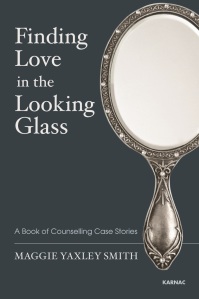The Secrets of Chinese meditation (asblsima.be from Google free images)
I made a New Year’s resolution that if I had been talking to someone, reading or watching something that was distressing close to bed time, I would find something to do, watch or read that would make me smile or laugh, even if it was just for 15 minutes. It leaves a good taste from the day and my step is lighter up the stairs to bed.
I was lucky enough to have a mum who had a very earthy sense of humour and I could share any joke with her that I heard at school, really ANY joke. She would laugh, sometimes ask me to explain, and then if it was a bit too risqué, she would tell me not to repeat it to anyone else. When our family sat around the dining table and someone said something that could be taken two ways, she would suddenly look utterly fascinated by the garden. I knew she was avoiding meeting my gaze. If that happened, we would both end up with tears streaming down our faces in fits of giggles. I have been both blessed and cursed by occasional bouts of uncontrollable giggles, especially at times when it was least acceptable to show it. It was never cruel laughter but once or twice it did get me into trouble. There have been nearly one and half million viewings of the Hannah Sargeant, Funny Nativity, video on YouTube:
https://www.youtube.com/watch?v=ihQuiyV-lXU
When we are busy with life, it can be hard to make space for laughter, for noticing the ridiculous in the everyday. I was listening to a comedian recently who was describing the ordinariness of his bathroom and because he was a great observer, it was surprisingly funny. I love to spend time with friends who I can laugh with. It ripples positive energy throughout our bodies and is such a release of those tensions and stresses that we absorb and can become so easily attached to. My husband, Chris and I are fortunate to share a similar earthy sense of humour about little things. This morning on a walk, a blackbird was pulling and pulling at a worm. We stopped to watch as he eventually won his rather too long and heavy prize. As he carried it across the path in front of us, he trod on it rather awkwardly and ended up with only a tiny fraction of the worm in his beak. He flew off in disgust as we laughed but we noticed that he did come back and retrieve it! When our children were young, it was a pure joy to hear them laugh out loud when we were playing games or watching something on television.
I read recently that the third largest reason for people seeking medical help is for depression and certainly when I was counselling, this was one of the largest categories of presenting problems. The pressures in schools and the working world of high expectations; lack of money; fewer jobs; expensive housing and seemingly less time for everything creates enormous stress. One important way of relieving this is to take the time to notice those things that lighten our load. In counselling, I would often use humour as a way of encouraging people to become self aware, notice repeat behaviours and be able to gently laugh at themselves for ‘doing it again’ rather than getting shameful, angry or self abusive because, like all of us, they were not ‘perfect’.
We all experience ups and downs and we need to accept and normalise the whole gamut of human feelings. However, we can find ourselves forming more attachment to negative outcomes rather than positive outcomes, we can become stuck for longer in negative thoughts and feelings. To lift ourselves out of this, it can genuinely help us to focus more on what makes us laugh. The balance we achieve in doing this enhances our good health and well being. Many of us are in serious need of a dose of laughter to lighten our lives on a daily basis.
















